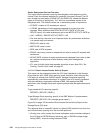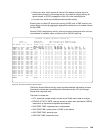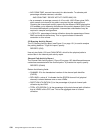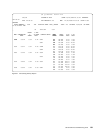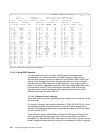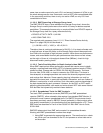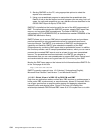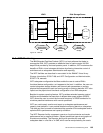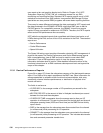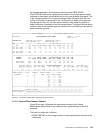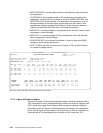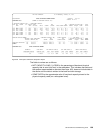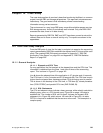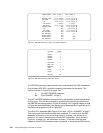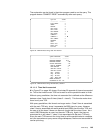136 Storage Management with DB2 for OS/390
own report writer and graphics display tools. Refer to Chapter 10 of IXFP
Subsystem Reporting,
SC26-7184, as a reference manual for any RVA
monitoring and reporting facilities. Standard IXFP reports require use of a SAS
statistical environment from SAS Institute, Incorporated. IBM Storage Division
specialists can also provide REXX programs with some basic reporting facilities.
There may be some differences between the data produced by IXFP reports and
the data produced in the IDCAMS LISTDATA output that RMF uses to edit its
CACHE reports. For compatibility reasons, the RAMAC Virtual Array counts
certain I/Os as noncached in response to LISTDATA. Therefore, the IXFP reports
reflect actual RVA performance more accurately.
IXFP edits three standard reports that consolidate activities at two levels: on all
LPARs sharing the RVA, and on all four LCUs contained in the RVA. The standard
reports are:
• Device Performance
• Cache Effectiveness
• Space Utilization
The Space Utilization report provides information related to LSF management of
physical disk space.The Device Performance and Cache Effectiveness reports
offer a complementary view of RMF and can be used to cross-check RMF
information. From a DB2 application point of view, the system summary
information indicates what to look for. Other detailed information either at the
functional volume level or at RVA hardware subcomponent level are beyond the
scope of this chapter.
11.3.1 Device Performance Reports
Figure 54 on page 137 shows the subsystem summary of the device performance
report. Four fields of this report complement the RMF view. Other information for
storage specialists is related to either functional volume statistics, disk array
summaries, channel interface performance, or distribution of physical drive
module utilization.
The fields to review are:
• I/O PER SEC is the average number of I/O operations per second for the
subsystem.
• KBYTES PER SEC is the amount of data in kilobytes transferred per second
between the host and the subsystem.
• I/O SERVICE TIME components show the average service time per I/O
operation in milliseconds. This service time does not include host and channel
subsystem queuing times (IOSQ and Pend time) as the RMF Device Activity
report shows.
• DISC is the average time the subsystem was disconnected from the channel
(in milliseconds) while processing an I/O operation.
• CONNECT is the average time the subsystem was connected to the channel
(in milliseconds) while processing an I/O operation. This includes data transfer
time and command parameter transfer time.



